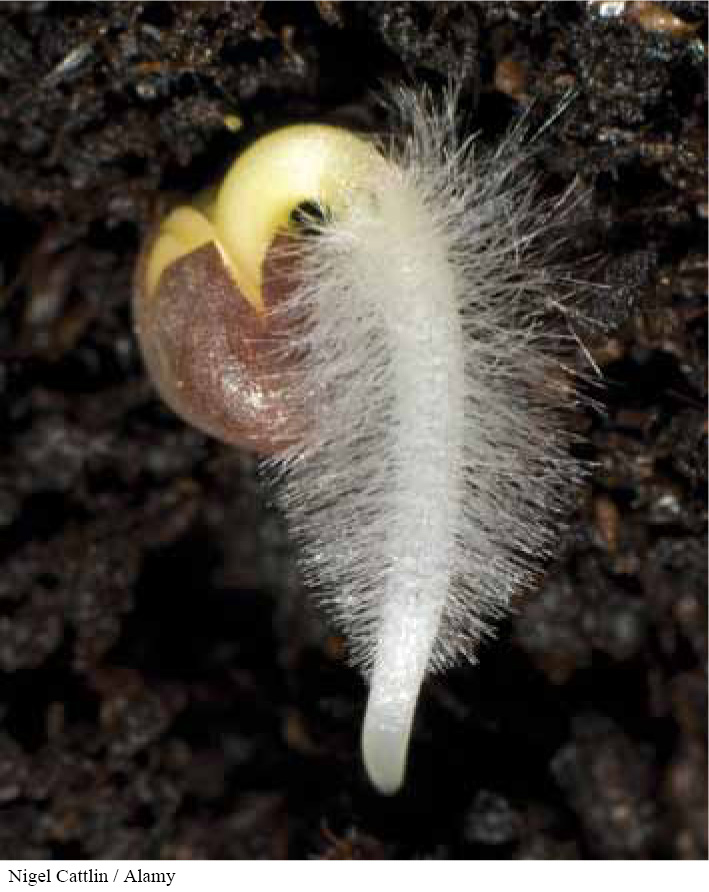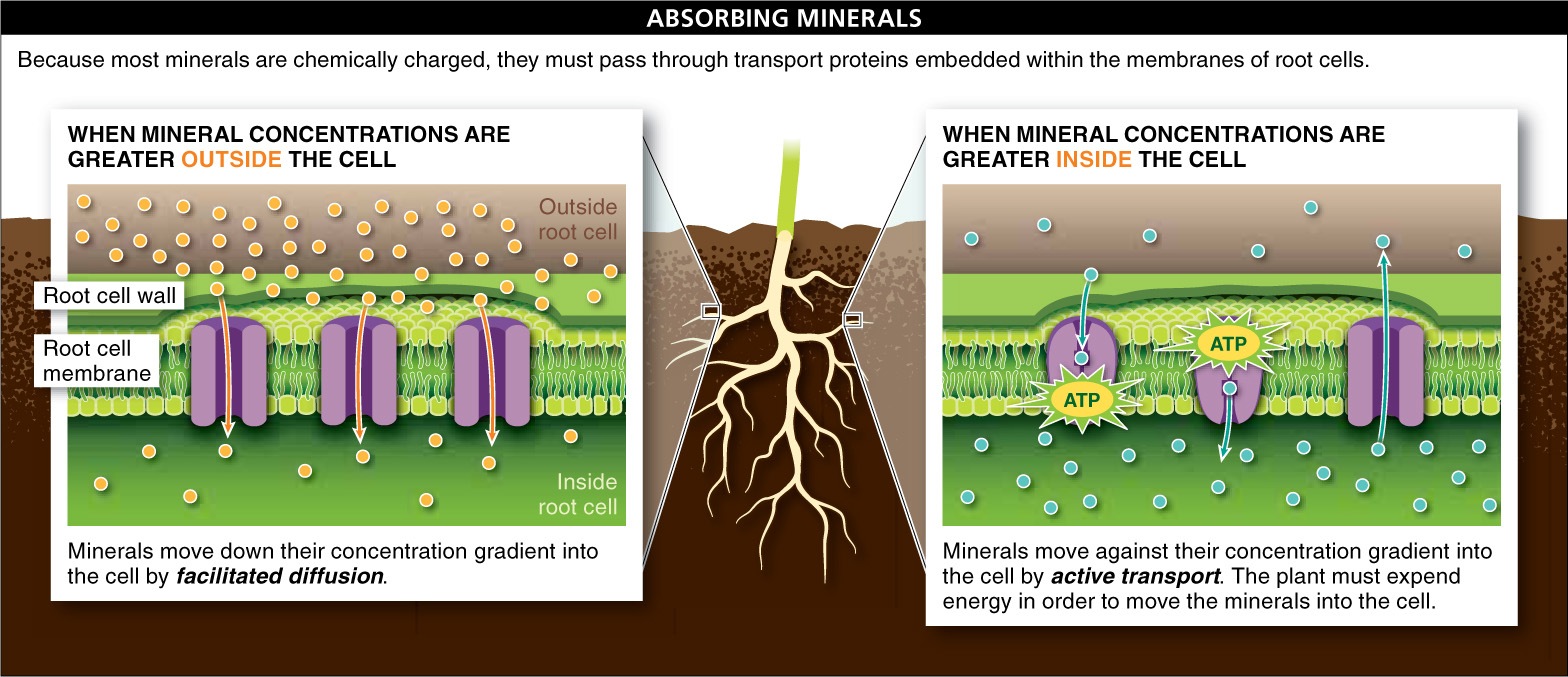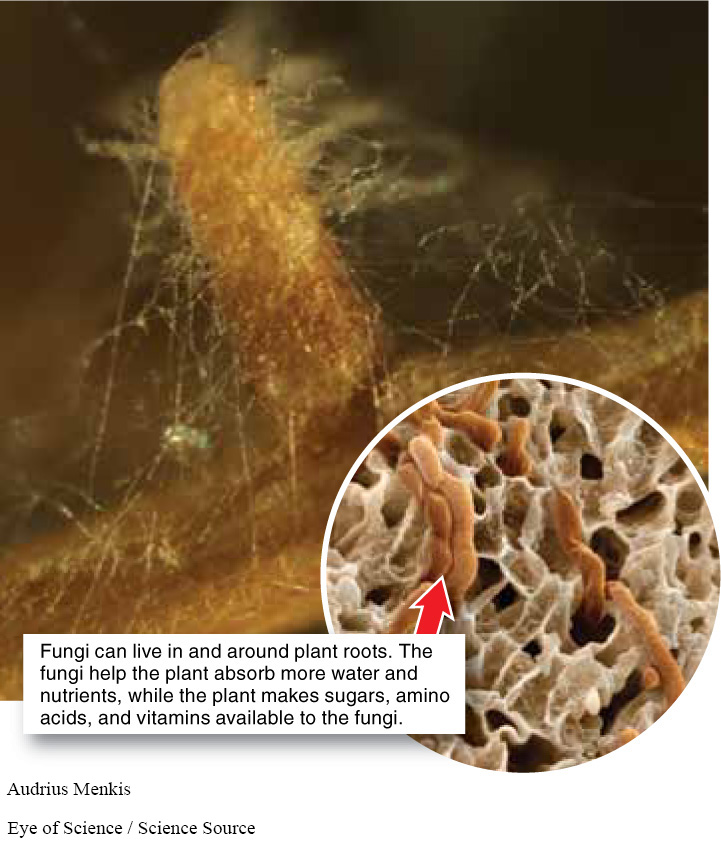17.12–17.14: Plants transport water, sugar, and minerals through vascular tissue.


Plants absorb water and minerals from the soil through their roots. Water absorption relies on osmosis and is straightforward: the cell membranes of the root hair cells are permeable to water, and as long as the root reaches water in the soil that has a lower concentration of dissolved minerals than the fluid inside the cells, water will move into the root (FIGURE 17-29).
The absorption of minerals requires an intervening step (FIGURE 17-30). Because most minerals are chemically charged, they cannot pass through cell membranes unaided. For this reason, plants take up minerals from the soil only with the help of transport proteins embedded in their root cell membranes. If a mineral is at a higher concentration outside a root cell than inside, the mineral can move across the membrane by simple facilitated diffusion (a process that does not require the plant cell to expend any energy). If a mineral is at a higher concentration inside the cell, it can still be taken up by the plant, but only through active transport (see Section 3-
When it comes to acquiring water and minerals, plants again benefit from collaboration with other organisms, in this case fungi (FIGURE 17-31). Most plants have fungi growing all around and even within their roots, forming mutualistic associations known as mycorrhizae. Tiny, thread-


712
TAKE-HOME MESSAGE 17.12
Plants absorb water from the soil into their root hairs through osmosis. Minerals are also absorbed into the roots, but this requires the help of transport proteins in the root cell membranes. In a mutualistic association called mycorrhizae, fungi growing into and around plant roots increase the plant’s water and mineral absorption, while gaining access to energy and nutrients from the plant.
Describe the mutualistic relationship between fungi and plant roots.
713